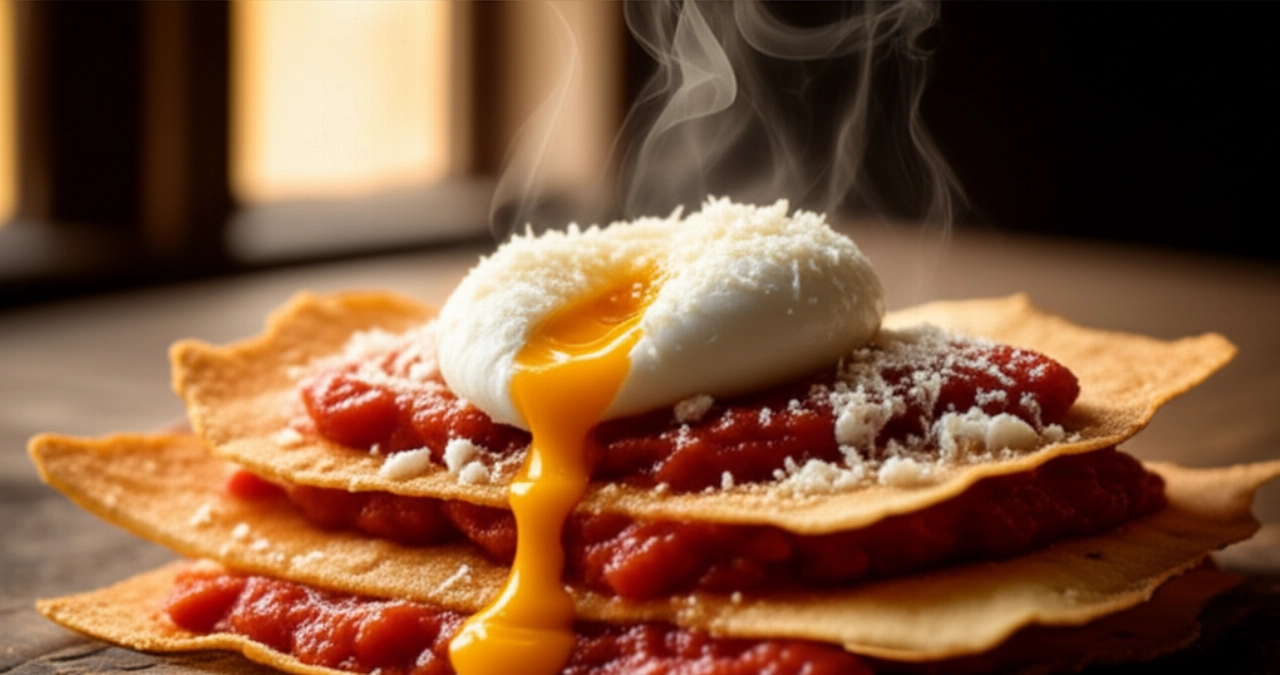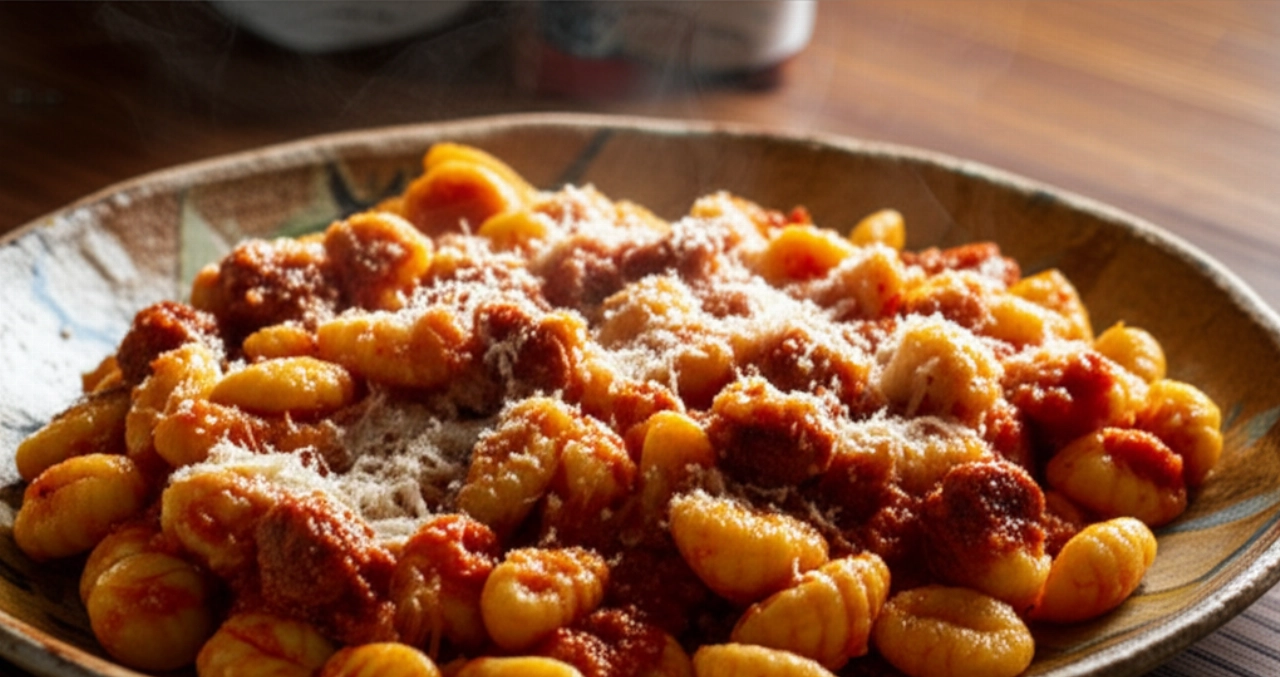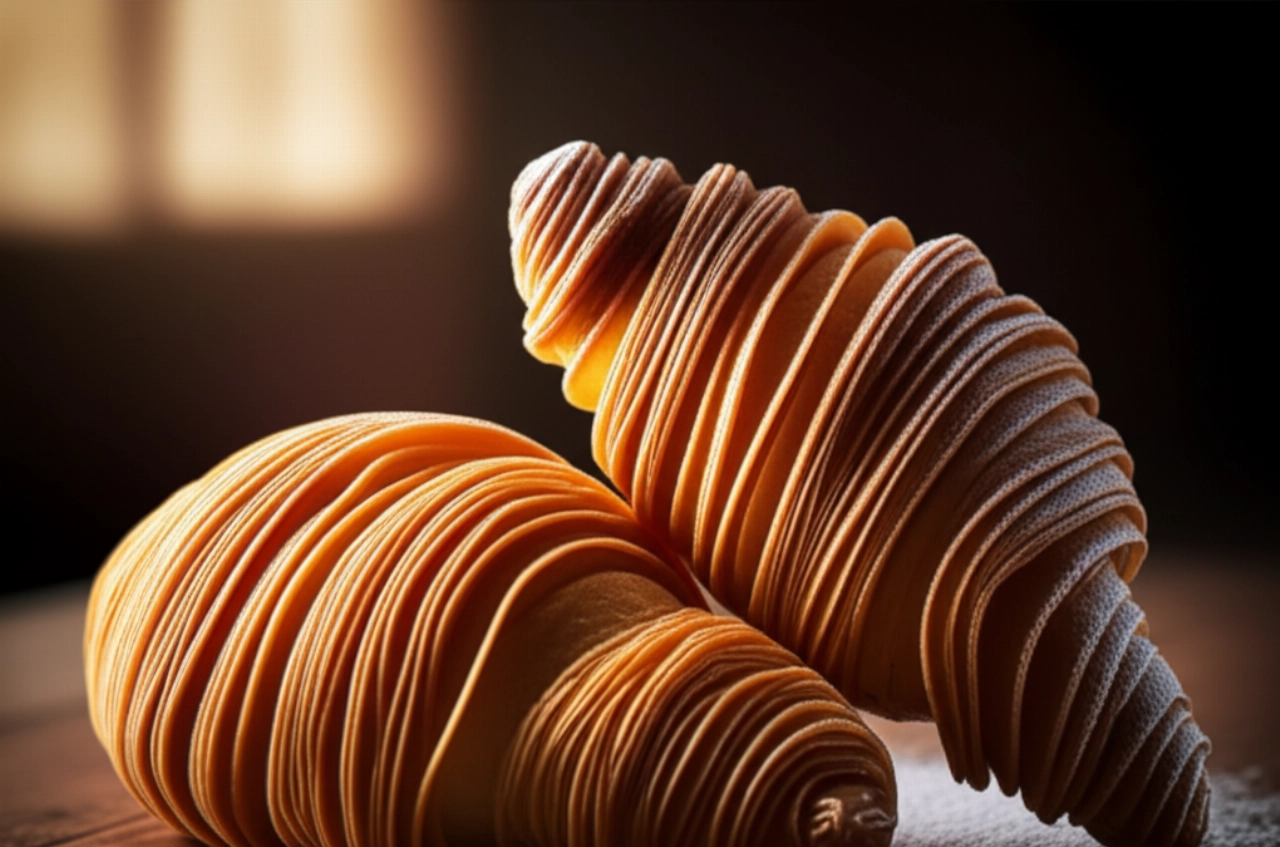Imagine the unmistakable aroma filling the kitchen, a golden, crispy crust yielding under your fingers, revealing a soft, airy crumb with a unique and unmistakable flavor. We're talking about Pane di Altamura DOP, a true treasure of Apulian bread-making, a pillar of our table that tastes of history, tradition, and home.
But how do you recognize true Pane di Altamura? And how can we best enjoy it, perhaps replicating its magic at home or, even better, transforming it into dishes that leave a lasting impression? Finding the right guide, one that reveals the true secrets, might seem like a challenge.
Make yourself comfortable. On this page, you won't just find a list of characteristics, but the definitive guide, full of tricks and tips, to best appreciate and use Pane di Altamura. I'll guide you step-by-step to discover its authenticity and versatility, guaranteeing you success that tastes of tradition and love. Success is guaranteed, and so is the taste of home.
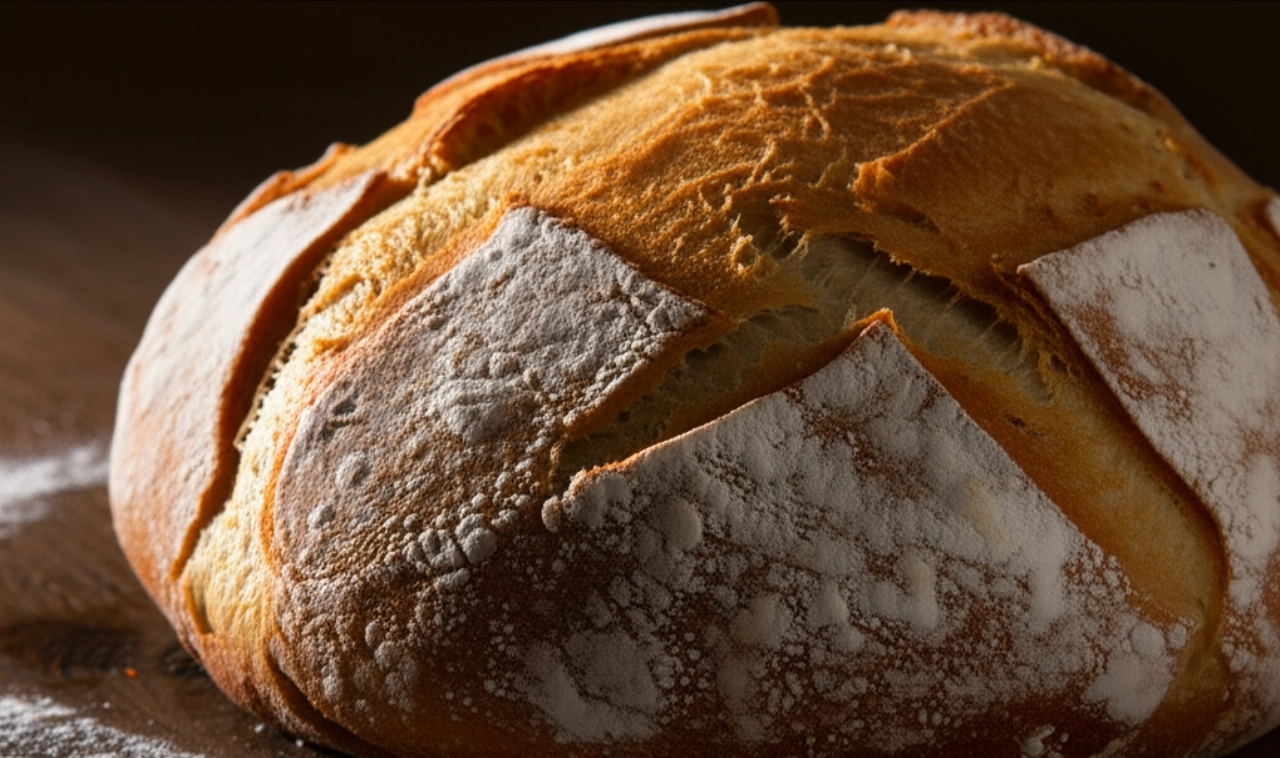
Pane di Altamura DOP: A Treasure of Puglia Between History and Tradition
Pane di Altamura is not just any bread. It is a Protected Designation of Origin (DOP) product, a seal that guarantees its authenticity and origin. This means that every loaf must comply with a very strict set of regulations, which defines its ingredients, production methods, and even the geographical area where it can be produced: the Murgia plateau, in Puglia.
Its history is rooted in peasant tradition, when bread was a staple food and had to last a long time. And this is precisely its strength: its ability to remain fragrant for days, sometimes even a week, thanks to skillful processing and the use of excellent raw materials.
The Smart Ingredients: The Choice That Makes the Difference
- Durum wheat re-milled semolina: Not just any flour, but a very fine semolina, rich in gluten, which gives the bread its unmistakable structure and golden yellow color. It is the heart of Pane di Altamura.
- Natural sourdough starter: The true secret to its long shelf life and airy crumb. A living yeast, handed down from generation to generation, which gives the bread a unique aroma and flavor.
- Water and salt: Simple, but fundamental. The water must be pure and the salt expertly measured to enhance the flavor of the wheat.
The combination of these ingredients, together with a double leavening and baking in the traditional wood-fired oven, creates a bread with a thick, crispy crust, and a soft, elastic crumb with large, irregular air pockets. This is the magic of authentic bread-making.
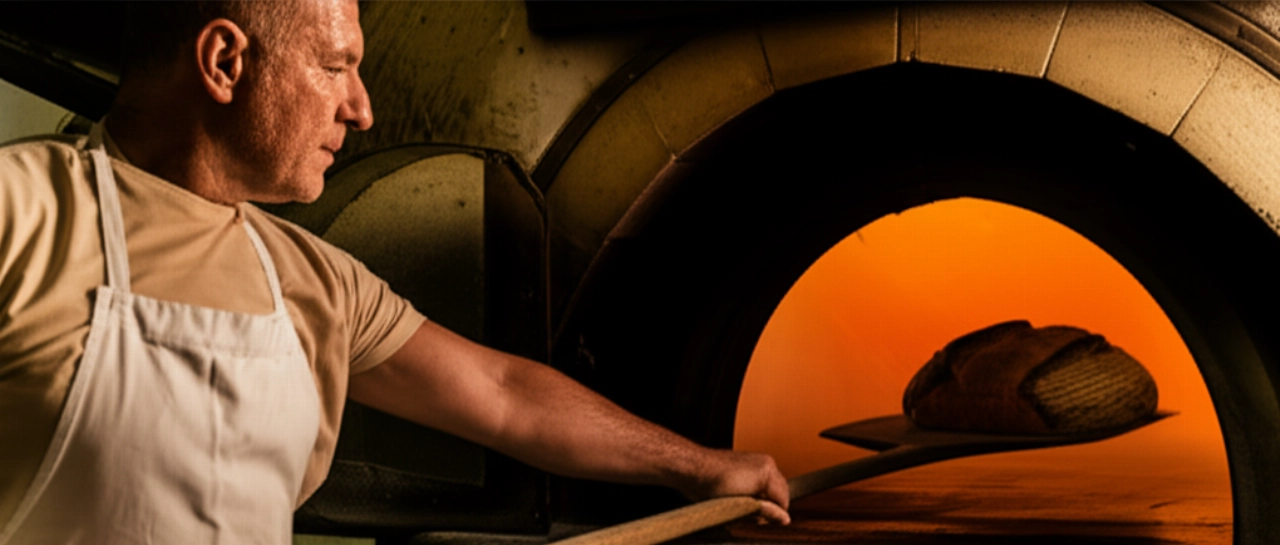
Recognizing True Pane di Altamura: Pay Attention to the Details!
Don't be fooled! True Pane di Altamura DOP has very specific characteristics that distinguish it. Here's how to recognize it and bring authenticity home:
- Shape: It can be "accavallata" (priest's hat) or "ciabatta". Both shapes are typical and recognizable.
- Crust: Thick, dark, almost burnt in some spots, but incredibly crispy and fragrant.
- Crumb: Intense straw yellow in color, with an airy and irregular structure. It must be elastic and fragrant.
- Weight: It is a heavy, compact bread that gives a feeling of fullness just by touching it.
- Aroma: Intense, of toasted wheat, with slightly acidic notes given by the sourdough starter.
When you buy it, always look for the DOP mark and the label that certifies its origin. It's your passport to true peasant tradition.
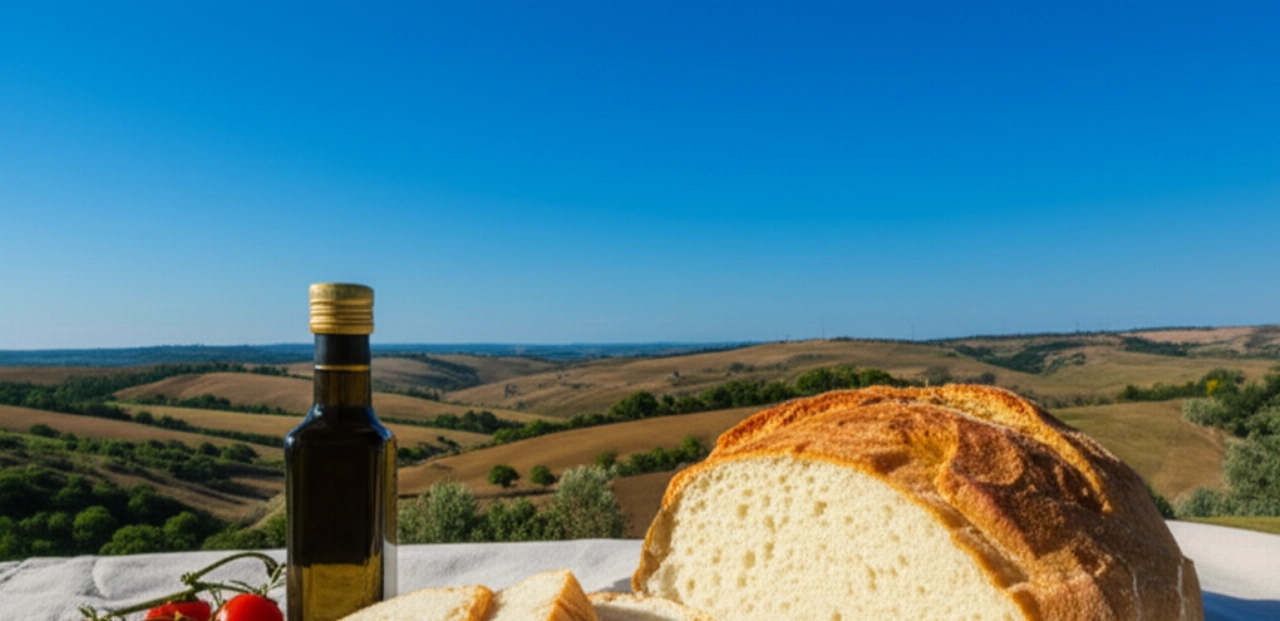
Grandma's Secret: Why Pane di Altamura is So Special
My grandmother, who was of Apulian origin, always used to say: "Pane di Altamura doesn't age, it transforms." And she was right! Its extraordinary ability to stay fresh for days, sometimes even a week, made it precious in times when waste was unthinkable. This characteristic, given by its particular processing and sourdough starter, makes it perfect not only for the classic "scarpetta" (mopping up sauce), but also for being reused in a thousand ways, avoiding throwing away even a single piece.
It's a bread that invites you not to have performance anxiety, because even if you don't consume it immediately, it won't lose its value. On the contrary, it will give you the opportunity to create new delights!
Recipes with Pane di Altamura: Not Just for "Scarpetta"!
Pane di Altamura is a versatile ingredient, capable of elevating any dish. Don't limit yourself to using it to accompany your best sauces (even if for "scarpetta" it's unbeatable!). Here are some ideas to best enjoy it, from fresh to stale bread.
The Perfect Bruschetta: An Unfailing Classic
A simple appetizer, but one that becomes a sublime experience with Pane di Altamura. Its thick crust and compact crumb are perfect for absorbing flavors without getting too soggy.
- Toast the bread: Cut slices about 1.5 cm thick. You can toast them on the grill, in the oven, or in a pan until golden and crispy.
- Rub with garlic: As soon as it's removed from the heat, gently rub the surface with a clove of garlic. The heat will release all the aroma.
- Season: Add fresh diced cherry tomatoes, seasoned with quality extra virgin olive oil, salt, pepper, and fresh basil. A drizzle of raw oil before serving will enhance every flavor.
Revisited Panzanella: Freshness and Flavor
A summer salad that enhances stale bread, transforming it into a starring ingredient.
- Soak the bread: Break up the stale Pane di Altamura and place it in a bowl with cold water for about 10-15 minutes, until it's soft but not mushy.
- Gently squeeze it: This is the secret to avoiding a watery result. Squeeze the bread well between your hands, but don't overdo it.
- Prepare the dressing: Combine the squeezed bread with ripe tomatoes, cucumbers, red onion, fresh basil. Season with plenty of extra virgin olive oil, white wine vinegar, salt, and pepper. Mix well and let it rest in the fridge for at least 30 minutes before serving, to allow the flavors to meld.
Gourmet Crostini: Quick Ideas for Every Occasion
Pane di Altamura is the perfect base for rich and flavorful crostini, ideal for an aperitif or a quick lunch.
- With cheeses and cured meats: Toast a slice and top with a slice of Parma ham and Parmesan cheese shavings. Or, try with stracciatella and sun-dried tomatoes.
- With grilled vegetables: Spread some cream cheese on the toasted slice and add grilled zucchini, eggplant, and bell peppers.
- Sweet temptation: Although unusual, try toasting it and spreading hazelnut cream or jam on top. Its robust structure will hold up perfectly!
Soups and Veloutés: The Rustic Touch That Makes a Difference
Pane di Altamura, especially stale bread, is excellent for adding body and flavor to soups and veloutés, or for serving as a crispy accompaniment.
- Pappa al pomodoro: A Tuscan classic that pairs divinely with the robustness of Pane di Altamura. Use it instead of Tuscan bread for a more rustic and flavorful version.
- Croutons for soups: Cut the bread into cubes, season with a drizzle of oil and rosemary, and toast in the oven. Add it to your favorite soups for a crispy note.
Mistakes to Avoid (and How to Prevent Them) When Using Pane di Altamura
Even such perfect bread can be mistreated! Here are common mistakes to avoid to always enjoy it at its best:
- Storing it in closed plastic bags: Pane di Altamura needs to breathe. Store it in a paper bag, wrapped in a linen or cotton cloth, or in a bread bin. This way, it will maintain its external crispness and internal softness.
- Soaking the bread too much for panzanella: If you squeeze it too little, your panzanella will be watery and the bread will fall apart. Squeeze it well, but gently, to maintain its consistency.
- Over-toasting it for bruschetta: If it becomes too hard, it will be difficult to bite and will lose its pleasantness. It should be crispy on the outside and slightly soft on the inside.
Tips and Frequently Asked Questions about Pane di Altamura
Still have some doubts? Here are the answers to the most common questions about our beloved Pane di Altamura.
Can I make Pane di Altamura at home without a wood-fired oven?
Replicating the authenticity of a wood-fired oven is difficult, but you can achieve excellent results even in a home oven. The important thing is to use re-milled durum wheat semolina and sourdough starter, and bake at high temperatures, perhaps with a bowl of water at the bottom of the oven to create steam and promote crust formation.
How do I store Pane di Altamura to make it last longer?
The best way is to wrap it in a cotton or linen cloth and then place it in a paper bag. If you want to store it for longer, you can slice and freeze it. Thaw it at room temperature or briefly pass it through the oven to revive it.
What is the difference between Pane di Altamura and other semolina breads?
The main difference lies in the DOP regulations. Pane di Altamura must be produced with re-milled durum wheat semolina from specific varieties cultivated in the Murgia area, with sourdough starter and a well-defined processing and baking method. Other semolina breads might use different flours or less stringent processes.
What are the best pairings with Pane di Altamura?
It's perfect with Apulian extra virgin olive oil, fresh cheeses (like burrata or stracciatella), cured meats, fresh tomatoes, and of course, to accompany hearty sauces like ragù or meatballs in sauce. Its structure also makes it ideal for soups and legumes.
Can I use stale Pane di Altamura for other recipes besides panzanella?
Absolutely! Besides panzanella and pappa al pomodoro, you can use it to make bread meatballs, to prepare excellent homemade breadcrumbs (perfect for cutlets or gratins), or to enrich legume soups.
Your Journey into Authentic Flavor Continues!
There you have it! Now you don't just have bread, but a true treasure of flavors and traditions. You hold not only the keys to recognizing and enjoying true Pane di Altamura, but also the inspiration to transform it into culinary masterpieces that smell of home and authenticity.
Don't limit yourself to "scarpetta" (even if it's divine!). Experiment, play with flavors, and let yourself be guided by its incredible versatility. Cooking is an act of creativity, and with such a solid base, applause will not be lacking.
Have you discovered a new way to enjoy Pane di Altamura? We're very curious to see your masterpiece! Leave a comment below, tell us how it went, or share a photo on Instagram by tagging @CercaRicette.it. And if you love authentic flavors, don't miss our guide to the Orecchiette with Rapini Recipe or the secrets for a Quality Extra Virgin Olive Oil that will enhance all your dishes.
